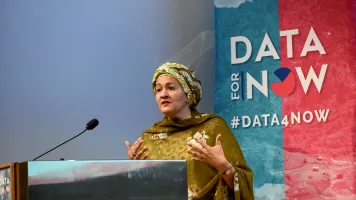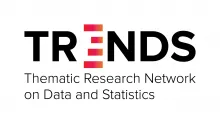The launch of the Data for Now initiative in September 2019 and the inception workshop in November 2019 have both helped to keep up momentum and spark progress on timely data for the Sustainable Development Goals (SDGs). Such high-profile events generate amazing enthusiasm, open new doors for partnerships, and set deadlines for progress.
At the same time, a lot of effort is needed to give substance to these events. Otherwise, you’re left frustrated with theoretical discussions that don’t amount to much progress.
For us, progress means having the right partnerships in place for national statistical offices to sustainably produce timely data for the SDGs. It’s a bit like fitting missing gears into a watch and oiling the clockwork, whether a simple digital Casio fits the brief, or a diamond-encrusted Rolex.
(Fine, a digital Casio doesn’t have clockwork and no one in Data for Now is getting a Rolex, but still proud of this metaphor.)
In practice, partnership brokering is a difficult and resource-intensive exercise – it’s a mix of the right solutions, relationships, and timing.
Right solutions
The data for development space has produced many, many solutions designed to meet a wide range of needs. Technology and innovation have become buzzwords, fueling even more "solutions," whether it's a new platform, new app, one of the many Earth observation satellites circling our planet, a new partnership, or something completely different - these form a dizzying array of opportunities for partnerships and progress.
After the workshop in Kigali, a few participants mentioned that limited understanding of the different solutions prevented deeper discussions on partnerships. Indeed, knowing what solutions are out there, and what the pros and cons are of each, is a crucial first step in brokering partnerships.
We’re conducting a series of landscape reviews in response, so that country partners can fairly assess the different options available. The aim is to produce a living document that can help the wider community broker effective partnerships. We’ll keep you posted over the coming months.
Right timing
Good solutions can become great solutions if the partners behind them are able to really invest (time, money, political capital) in their implementation. Timing and aligning with planning cycles is key to unlocking incentives for partners.
For example, some organizations may be in the design phase of work planning, with potential to commit resources and align with common areas of interest as part of Data for Now. Other times, a project may be at the stage where a significant amount of resources have already been invested, but the commitment can be reinforced in a different way, like by distilling, adapting, or sharing lessons and experiences from the work, or expanding the existing partnership.
Right relationships
In organizations of all sizes, there are information and collaboration silos. There may be a great existing relationship with a key organization, but it may not be with the right team or department. Often, partnership brokering involves a chain of one-on-one conversations that lead to a discussion with the wider group. And as the "broker," knowing who needs what, and who has things to offer, drives progress faster.
Oiling the clockwork
This is the Data for Now approach: putting the right partners together to meet a country's needs, and identifying/amplifying incentives for collaboration. Fitting in gears and oiling the clockwork.
The initiative provides incentives by filling gaps on what partners need but don’t have - that last missing piece to make it all work - whether that’s uptake at the country-level, knowledge sharing and expertise coordination, or driving the political agenda on the global stage.
Want to become a gear or supply some grease? Get in touch. We’re eager to hear from policymakers, experts, data providers, funders, and everyone in between.

